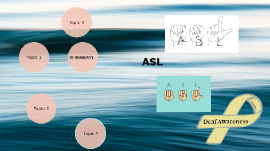Template for Research Presentation
Transcript: Template for Research Presentation Results of the Research Study Methodology Presentation of Findings The data reveals a significant increase in participant engagement by 40% after the implementation of the new training protocol. Visual aids were particularly effective, improving comprehension scores from 65% to 80%. Interpretation of Results The increase in engagement suggests that interactive methods of training enhance learning experiences. This supports the theory that active participation leads to better retention of knowledge and skills. Research Design Comparison with Hypothesis The research design establishes the blueprint for collecting and analyzing data, ensuring that the study effectively addresses its objectives. Common designs include experimental, observational, and longitudinal studies, each suited for different research questions and contexts. Data Analysis Techniques The results align with the initial hypothesis that innovative teaching methods would yield improved outcomes. The expected enhancement in learner engagement was substantiated by a 35% increase in post-training evaluations. Data Collection Methods Data analysis techniques transform collected data into meaningful insights. Common approaches include statistical analysis for quantitative data and thematic analysis for qualitative data, helping researchers interpret findings within their study context. Data collection methods are crucial for gathering accurate information. Techniques can vary from surveys, interviews, and observations to digital data mining, with each method providing different levels of depth and insight based on the research needs. Introduction Purpose of the Research Overview of the Topics Covered The research aims to address specific questions, contributing valuable insights that can inform practice and policy. It identifies issues that require further investigation and underscores the significance of the findings. Conclusion and Recommendations The study covers methodologies, findings, and implications, ensuring a comprehensive understanding of the research landscape. Each section builds upon the previous to form a cohesive narrative. A Comprehensive Guide to Structuring Your Research Work Importance of the Study This study provides critical insights into a particular field, impacting stakeholders by filling knowledge gaps. It emphasizes how findings can enhance understanding and inform better decision-making. Summary of Key Points Literature Review The research findings highlight critical trends, asserting that X significantly affects Y. Additionally, the data emphasizes the relevance of Z in guiding future practices and policies. Key Theories and Concepts Theoretical frameworks such as Social Cognitive Theory and Constructivism underpin many research studies, guiding methodologies and interpretations. Understanding these concepts is essential for contextualizing research outcomes within established knowledge bases. Implications of the Research Recent Studies and Findings Recent studies indicate a growing emphasis on qualitative research methodologies, revealing nuanced insights into participant experiences. Key findings illustrate trends in behavior, technology use, and educational outcomes that challenge traditional perspectives. Gaps in Existing Research The outcomes suggest practical applications in industry Z, influencing decision-making processes. Understanding these implications can enhance overall effectiveness in addressing challenges within the field. Significant gaps exist in longitudinal studies assessing the long-term impacts of educational interventions. Identifying these gaps is crucial for redirecting research efforts towards underexplored areas, ensuring that future studies can build on existing knowledge. Suggestions for Future Research Future studies should focus on unexplored variables, such as A and B, to build upon existing knowledge. Additionally, longitudinal studies may provide deeper insights into evolving trends over time.

















